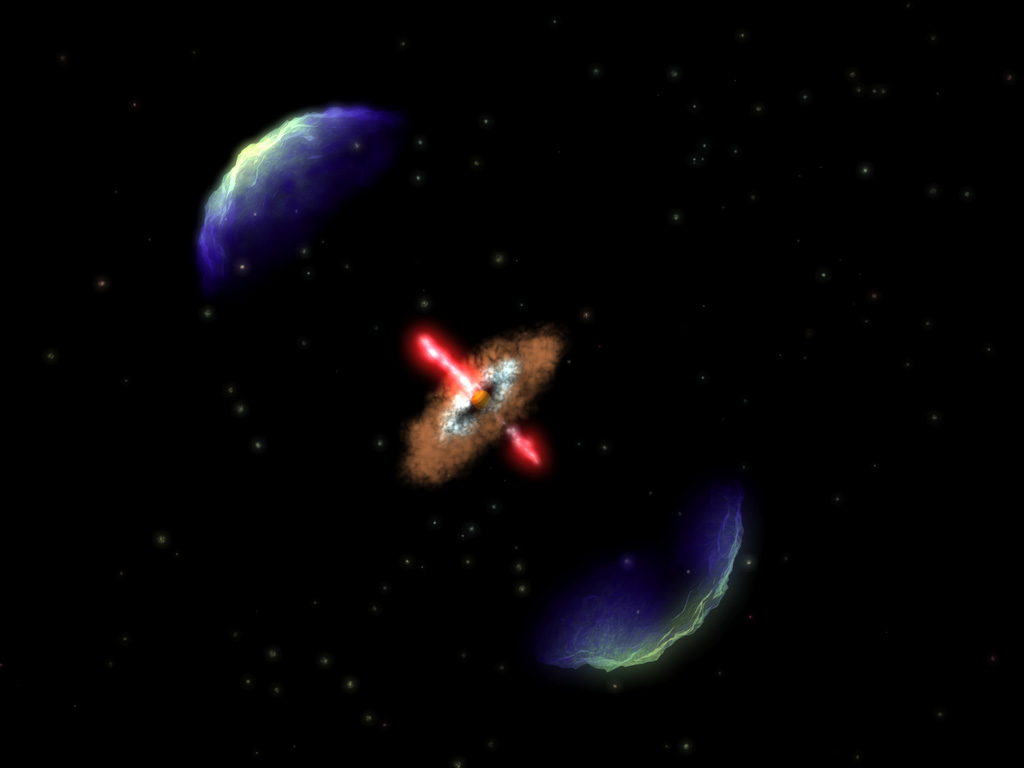[/caption] Brown dwarfs are an interesting sort, and can only be classified in a kind of cosmic periphery between stars and planets: they are too small to be called stars and too large to be called planets. And astronomers haven't been sure whether they form like stars, from the gravitational collapse of gas clouds, or if they form like planets, where rocky material comes together until it grows massive enough to draw in nearby gas. But now strong evidence has been found that brown dwarfs form more like stars. Using the Smithsonian's Submillimeter Array (SMA), astronomers detected molecules of carbon monoxide shooting outward from a brown dwarf ISO-Oph 102. This type of molecular outflows typically is seen coming from young stars or protostars. However, this object has an estimated mass of 60 Jupiters, meaning it is too small to be a star, and has therefore been classified as a brown dwarf. But this new finding means brown dwarfs are more like stars than planets.
Typically, brown dwarfs have masses between 15 and 75 Jupiters, and the theoretical minimum mass for a star to sustain nuclear fusion is 75 times Jupiter. As a result, brown dwarfs are sometimes called failed stars. A star forms when a cloud of interstellar gas draws itself together through gravity, growing denser and hotter until fusion ignites. If the initial gas cloud is rotating, that rotation will speed up as it collapses inward, much like an ice skater drawing her arms in. In order to gather mass, the young protostar must somehow shed that angular momentum. It does so by spewing material in opposite directions as a bipolar outflow. [caption id="attachment_21795" align="alignnone" width="250" caption="ISO-Oph 102 offers the first strong evidence in favor of brown dwarf formation through gravitational collapse. Credit: David A. Aguilar (CfA) "]
[/caption] A brown dwarf is less massive than a star, so there is less gravity available to pull it together. As a result, astronomers debated whether a brown dwarf could form the same way as a star. Previous observations provided hints that they could. The serendipitous discovery of a bipolar molecular outflow at ISO-Oph 102 offers the first strong evidence in favor of brown dwarf formation through gravitational collapse.
As might be expected, the outflow contains much less mass than the outflow from a typical star: about 1000 times less, in fact. The outflow rate is also smaller by a factor of 100. In all respects, the molecular outflow of ISO-Oph 102 is a scaled-down version of the outflow process seen in young stars.
"These findings suggest that brown dwarfs and stars aren't different because they formed in different ways," said Paul Ho, an astronomer at the Harvard-Smithsonian Center for Astrophysics and director of ASIAA. "They share the same formation mechanism. Whether an object ends up as a brown dwarf or star apparently depends only on the amount of available material."
The paper on ISO-Oph 102 will be published in the December 20 issue of the Astrophysical Journal Letters.
Source:
CfA
 Universe Today
Universe Today
